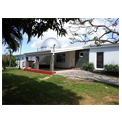UVI Physics faculty members are involved in a large number of projects, including computational astrophysics, technology development, and observational astrophysics. Here are some quick links:
- Gamma-ray Bursts and Gravitational waves
- UVI BurstCube
- UVI X-ray Polarymeter
- Fast Transients
- Space junk
- Stellar Evolution
Gamma-ray Bursts (GRBs) and Gravitational Waves searches (Morris, Cucchiara)
Long and short gamma-ray bursts are amongst the most powerful explosions in the Universe. Their gamma ray emissions make them visible from the very early stages of Universal history, pressumably 10-20, or only few hundreds million years after the Big Bang.
GRBs usually last a few seconds in Gamma, but the interaction between the ejected material in the explosion and the surrounding material creates a low-energy emission (the afterglow) that lasts up to few days. NASA Neil Gehrels Swift Observatory (Swift) has been the leading instrument for identifying GRBs and communicating real-time their location in the sky. For the past 15 years, Dr. Cucchiara and Dr. Morris have been involved in the identification of GRBs from Swift and the subsequent follow-up from a ground based observatory (optical, near-infrared). At UVI, the Virgin Island Robotic Telescope (VIRT) has been optimized to respond automatically to GRB alerts from Swift and robotically observe these interesting but fast-decaying objects. Also, UVI has access to a large number of facilities disseminated all around the World. This is to better understand the nature of these objects and unveil the secrets of the early years of the Universe. See our press release on GRB 170202.
In the summer of 2017, the first detection of Gravitational Wave (GW) signal occurred. Subsequently, astronomers have identified a gamma-ray emission arising from the identical region in the sky. This lead to the confirmation of an association between short GRBs produced by two black hole merging and GW signals. In this exciting time, UVI Physics is leading an effort to continue the quest for such an exciting new avenue of discoveries, which is comparable to the Galilean Revolution. As well other instruments around the World, VIRT will be dedicated in the search and discovery of other simultaneous signals that only last few seconds. This may represent the best chances to study such mysterious objects like Black Holes and their role in shaping the Cosmos.
UVI BurstCube (Cucchiara, Morris)
The advent of new, low-cost technologies have provided new avenues for the exploration of the Universe. UVI has been awarded a NASA-EPSCoR grant for the development of a cubesat called UVI BurstCube. Main objectives of this 3U satellite is the monitoring of the gamma-ray transient sky in the energy range 10keV-1 MeV. Starting in 2018, this 3-year project will observe the sky continuously seeking the possible high energy counterparts of Gravitational Waves emission. UVI faculty members are already involved in the observation of short Gamma-ray Bursts. Short GRBs are produced by the merging of two compact objects (neutron stars, black holes) and are responsible for the emission of Gravitational Waves. UVI BurstCube will work in synergy with satellites and other cubesat in orbit, including our collaborator's project from NASA Goddard Space Flight Center (BurstCube).


(Left: Possible payload for the UVI BursCube; Right: Possible configuration with two scintillator crystals. Credit: I. Laceaga)
UVI X-ray Laboratory (Morris)
UVI is developping a research-grade vacuum chamber for testing of flight-ready components. Specifically, Dr. Morris is interested in collaborating with private and public sector stakeholders for testing components dedicated to study of X-rays. Our collaboration with NASA centers guarantees UVI students the opportunity to practice technical skills at UVI as well as during internships off-islands. At the moment major projects include the development of the next generation X-ray polarimetry detectors to be flown in the incoming years.


